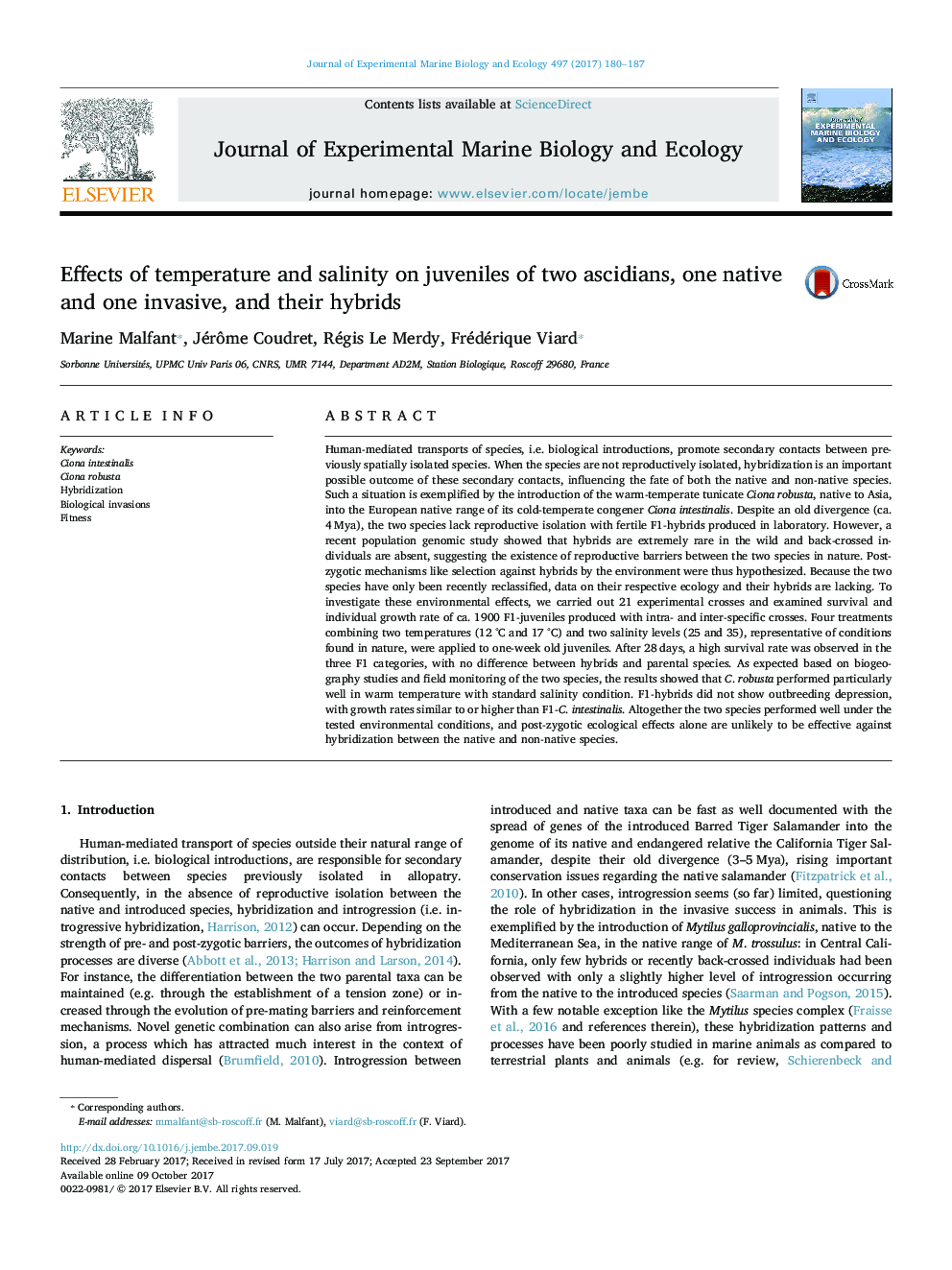| کد مقاله | کد نشریه | سال انتشار | مقاله انگلیسی | نسخه تمام متن |
|---|---|---|---|---|
| 5744446 | 1618378 | 2017 | 8 صفحه PDF | دانلود رایگان |
- Environmental effects on native and non-native Ciona species, and their hybrids
- Experimental study of temperature and salinity effects on juveniles survival & growth
- F1-hybrids performed like one or the other (or both) parental species.
- Extrinsic post-zygotic incompatibilities are unlikely to prevent hybridization in nature.
Human-mediated transports of species, i.e. biological introductions, promote secondary contacts between previously spatially isolated species. When the species are not reproductively isolated, hybridization is an important possible outcome of these secondary contacts, influencing the fate of both the native and non-native species. Such a situation is exemplified by the introduction of the warm-temperate tunicate Ciona robusta, native to Asia, into the European native range of its cold-temperate congener Ciona intestinalis. Despite an old divergence (ca. 4 Mya), the two species lack reproductive isolation with fertile F1-hybrids produced in laboratory. However, a recent population genomic study showed that hybrids are extremely rare in the wild and back-crossed individuals are absent, suggesting the existence of reproductive barriers between the two species in nature. Post-zygotic mechanisms like selection against hybrids by the environment were thus hypothesized. Because the two species have only been recently reclassified, data on their respective ecology and their hybrids are lacking. To investigate these environmental effects, we carried out 21 experimental crosses and examined survival and individual growth rate of ca. 1900 F1-juveniles produced with intra- and inter-specific crosses. Four treatments combining two temperatures (12 °C and 17 °C) and two salinity levels (25 and 35), representative of conditions found in nature, were applied to one-week old juveniles. After 28 days, a high survival rate was observed in the three F1 categories, with no difference between hybrids and parental species. As expected based on biogeography studies and field monitoring of the two species, the results showed that C. robusta performed particularly well in warm temperature with standard salinity condition. F1-hybrids did not show outbreeding depression, with growth rates similar to or higher than F1-C. intestinalis. Altogether the two species performed well under the tested environmental conditions, and post-zygotic ecological effects alone are unlikely to be effective against hybridization between the native and non-native species.
Journal: Journal of Experimental Marine Biology and Ecology - Volume 497, December 2017, Pages 180-187
